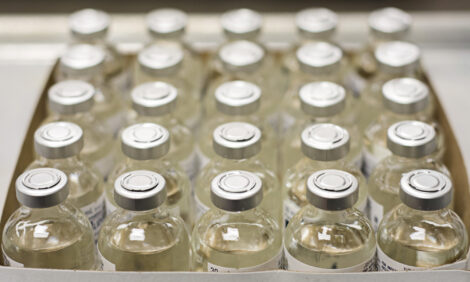



The dual-purpose chicken: The future of poultry farming?
GERMANY - Researchers presented results of a research project for better animal welfare in poultry farming.Scientists presented their research results from a cooperative project on poultry farming. Over a period of 3.5 years, the researchers investigated a new concept for poultry farming both experimentally and in the field at the Ruthe teaching and research facility of the University of Veterinary Medicine Hannover (TiHo): The central point of the "Integhof" project was to engage in egg and poultry meat production not by the use of different chicken lines specialised in the respective type of use, but a so-called "dual-purpose chicken."
The hens of the dual-purpose chicken of the line "Lohmann Dual" were used for the production of eggs and the cockerels for the meat production. The killing of the male chicks of the laying hen lines can thus be avoided. As a result, this holistic concept also aims to [improve animal welfare].
The results
How many eggs do dual-use hens lay compared to specialised hens?
Conventional laying hen lines produce around 300 eggs a year. The dual-use hens lay on average about 50 eggs less a year.
Do the eggs have a different quality?
During the project, the scientists examined 3,000 eggs. There were differences, but they were very small overall.
How much longer do dual-purpose cockerels need to be fattened compared to conventional fattening lines?
The dual-use cockerels grow slower and must be fattened accordingly longer. Conventional mast lines are fattened on average for the 32 days. When slaughtered, they weigh about two kilograms. The two-use cockerels need to be kept about twice as long to reach slaughtering a weight of 2kg.
How did the slaughter go?
The two-use cockerels had to be slaughtered due to their deviating from the typical fattening chicken at a laying hen slaughterhouse.
How did the behavior of the two-use chickens differ from the control animals?
The hens and the cockerels of the two-use hens were much calmer and easier to handle than the control animals of a conventional laying hen line. The cockerels of the dual-use line were significantly more mobile than [conventional broilers].
It was noticeable that the hens of the dual-purpose line had almost intact plumages until the end of the respective laying period. The animals of the comparison line showed in part considerable feather losses at different body regions. These spring losses were due to the feather pecking in the high-yielding comparison chickens.
What does the consumer say?
In a Germany-wide online survey by SocialLab of the Thünen Institute in Braunschweig, 1,500 consumers were interviewed. About 25 percent of respondents said they were ready to spend more on the eggs. About 16 percent say they can imagine buying the meat of the dual-purpose chicken. The marketing of the eggs will probably be easier than that of the meat.
Which feed do you need for dual-purpose chickens?
The cocks of the dual-purpose hens have a lower protein requirement compared to the comparison line, so that the dual-purpose cockerels can be compared to the conventional feed, a protein-reduced feed can be used without negatively affecting their performance. That would have ecological and economic benefits.
The hens tend to become fat during conventional feeding. If you receive a fiber-rich, nutrient-reduced feed, your body fat content will be significantly lower and the laying performance will be better. As the feed used is less expensive, it reduces the losses caused by the inferior egg yield compared to conventional laying lines.
How sensitive are the dual-purpose chickens to infections?
After a controlled experimental Gumboro virus infection of the chickens, the dual-purpose chickens showed less clinical symptoms. In addition, they recovered faster from the organ changes.
How high were the animal losses?
In total there were three fattening phases with an average of 2,000 animals. In the first round the animals were fattened for 75 days; the losses were 1.5 percent. In the second round, the cocks were fattened for 63 days with a mortality rate of 1.2 percent. In the third round, the [majority] lasted 64 days and the loss rate was 1.7 percent. The mortality rate of the comparison line Lohmann Brown Plus (the cocks of a conventional laying hen line) was significantly higher at 1.7 to 2.8 percent for the same fattening period.
How does it affect the health of the animals when hens, roosters and pullets are kept on a farm?
As a rule, farms specialise in different areas: the rearing of laying hens, the production of eggs or poultry fattening. In the Integhof project, the pullets were raised, the hens were used for the production of eggs and the cocks were used for fattening. From the point of view of animal health and hygiene, the husbandry on-farm was easy, which could be confirmed by a continuous sampling and further investigation in the laboratory.
The project
The full title of the project is: "Integhof - Poultry husbandry restructured: Integration of fattening and egg production with the use of the dual-purpose chicken as a measure for animal welfare." The Integhof project ran from August 2015 to March 2019 and was funded from the federal funds of the Landwirtschaftliche Rentenbank and supplemented by various industrial partners. The aim of the participating research organisations was to develop alternatives for various issues of agricultural chicken husbandry, which continue to focus on animal welfare and animal health, are economically viable, provide healthy food and lead to improved consumer acceptance.
The project partners
Freie Universität Berlin, Institute for Animal Welfare and Animal Husbandry of the Friedrich-Loeffler-Institute in Celle, Georg-August-University Göttingen, University of Hohenheim, Leibniz-Institute for Farm Animal Biology, Boehringer Ingelheim Veterinary Research Center, Lohmann Tierzucht, Big Dutchman, SocialLab Germany
A video on the subject can be found here
Source: Stiftung Tierärztliche Hochschule Hannover, PM 25.03.2019
Photo: Lohmann









